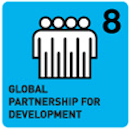ABOUT
THE UNITED NATIONS MILLENNIUM DEVELOPMENT GOALS
The third and final part of a ten-year photographic project
by Nick Danziger and Rory MacLean
"…with your great skill in using photographs to picture the events, joys and predicaments of ordinary human beings, you should be able to make a major contribution to the thinking on Millennium Development Goals. The MDG is indeed a visionary move, but its success will depend in an intelligent evaluation of ongoing work with an eye to the objectives to be achieved. You can make a big contribution to this, along with enriching our general understanding of how this important initiative of the United Nations – a brain child of Kofi Annan – is proceeding.” (Amartya Sen, Nobel Laureate in Economics, Thomas W. Lamont and Harvard University Professor)
Nine years ago, in 2005, World Vision sent Nick Danziger on a photographic assignment to some of the world’s poorest regions to document the effects of the United Nations Millennium Development Goals on individuals and their families. Nick saw and photographed people that often do not have a voice, but are affected by changes in climate, policies and laws that are not of their making. These decisions have had a huge impact on their lives, the lives of their families, and their communities.
In 2010 Nick Danziger returned to visit the same people he originally photographed in 2005. Each individual had as a focus one or more MDG, such as MDG 5, ‘Improve Maternal Health’ and asked had their lives been changed for the better or for worse since he originally began to document their lives?
I am sure you too would agree with the MDGs: eradicate extreme poverty and hunger, achieve universal primary education, reduce child mortality, improve maternal health, and combat HIV and AIDS, malaria and other diseases, ensure environmental sustainability and provide a global partnership for development. This will be one of the pieces of the jigsaw as those at the proverbial coalface speak to us as fellow citizens, leaders and heads of state, what has or hasn’t worked for them.
This remarkable and unique body of work following 20 stories in 8 countries [Niger, Zambia, Uganda, Cambodia, India, Armenia, Honduras and Bolivia] over ten years needs to be completed in time for the 2015 General Assembly in New York when the world’s leaders gather to discuss and debate the successes and failures of the first global strategy to bring people out of poverty.
What better barometer than to hear and see the stories of those that the UN MDGs were meant to help, to help focus on the post-2015 UN MDGs discussion and the sustainable development goals.
Over the next 14 months Nick Danziger, a world-renowned photographer with best-selling author Rory MacLean will, with the help of World Vision, revisit the same people Nick has repeatedly photographed to give voice to those who have most to gain and most to lose by our global environment.
Will Mavis, the family’s breadwinner have found an alternative to chopping down trees in Chirundi’s shrinking forest for charcoal and to support her family? Will Abbas’s in drought-stricken Komabangou and hundreds of children like him have found a way out of the gold mines to support families that can no longer survive on the meagre cereals their land produces? On another continent, Francisca’s family in Tegulcigalpa have much in common with Mavis, but have they found an alternative to squatting land that regularly subsides due to the flooding of their neighbourhood?
These are just some of the stories begun thirteen years ago. Mavis, Abbas and Francisca like the others in these stories were told help is at hand, Help in the shape of the United Nations and their trusted economists. As ‘The Millennium Development Goals’ campaign to which, for the first time ever, every nation on earth has signed up to, to reduce poverty, these voices will tell us not just whether we have or have not succeeded, but as the debate will continue – what next?
COUNTRIES TO BE RE-VISITED
Niger, Zambia, Uganda, India, Cambodia, Armenia, Honduras and Bolivia
CURRENT FUNDERS










